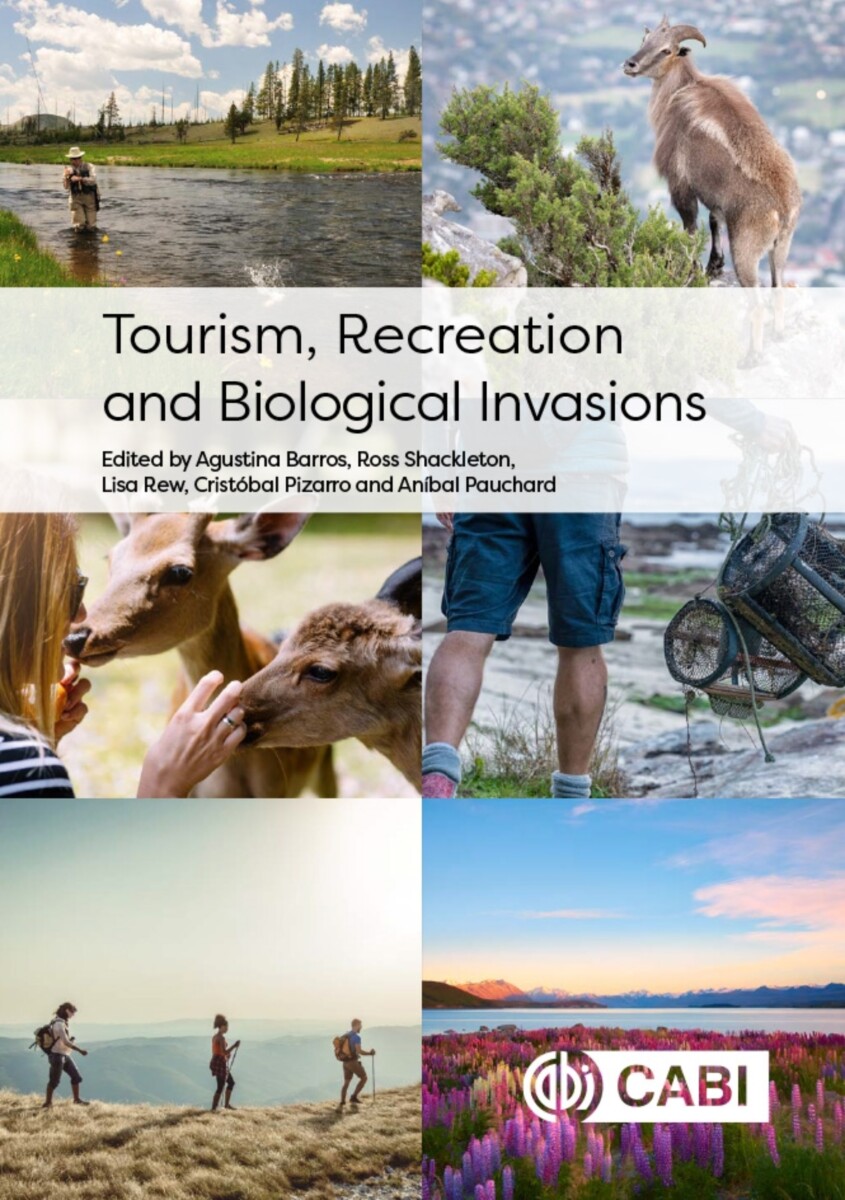Tourism, Recreation And Biological Invasions
- Publisher
CABI - Published
17th January 2023 - ISBN 9781800620452
- Language English
- Pages 176 pp.
- Size 6" x 9"
The first section of the book includes information about how tourism-related infrastructure and activities promote biological invasions, including key pathways for non-native invasive species introductions. This section provides case studies of different organisms that are known to be introduced and/or promoted by tourism in different ecosystems or regions. The second section elaborates on known and potential impacts of invasive species on tourism and recreation, including how they may affect, positively or negatively, the economic revenue from tourism, tourist access, recreation, aesthetic values and tourists' perceptions. The last section focuses on management and policy, covering aspects of how visitors perceive invasive species and their willingness to manage them, biosecurity measures to prevent invasion related to tourism, as well as potential policy options moving forward. The book draws on a number of examples across multiple taxa, landscapes and regions of the world.
1. Introduction: Tourism, recreation and biological invasions
How tourism and recreation facilitate biological invasions?
2. Nature-based tourists as seed dispersal vectors
3. The role of roads and trails for facilitating mountain plant invasions
4. Fungal invasions and potential spread through tourism and recreation
5. The role of human activities in the introduction of non-native plants to Antarctic and Subantarctic islands
6. Recreational fishing as a major pathway for the introduction of invasive species
7. The role of hunting, zoos and aquaria as pathways for vertebrate invasions
8. Plant invasions associated with ski resorts
9. The role of second homes in non-native plant invasions
How can invasions impact tourism and recreation?
10. Negative impacts in tourism of yellow jackets (Vespula germanica) in wilderness areas of Chile
11. Costs and impacts of aquatic plant invasions for tourism and recreation
12. The impact of invasive aquatic animals on tourism and recreation
Why incorporating the social dimensions when managing INNS is important?
13. Tourists’ knowledge, perceptions and behaviours toward invasive species
14. On visitors’ minds: knowledge and perceptions of invasive non-native plant species in mountains ecosystems
15. Contrasting tourist attitudes toward non-native species: a case study in Yellowstone National Park, USA.
16. Complexities of deer management, recreation and hunting tourism in Northeast Victoria, Australia
17. Managing invasive species in tourist and recreation areas of Montana, USA
18. Conclusion: A summary of current knowledge and future directions on the interplay between invasive species, tourism and recreation
Agustina Barros
Agustina Barros works as a plant ecologist at the National Institute of Nivology, Glaciology and Environmental Science (IANIGLA) in the National Research Centre CONICET in Argentina. Her research interests include recreation ecology, alpine plant ecology and mountain plant invasions, with most of her studies conducted in the Dry Central Andes of Argentina. She has previously published several publications in relation to recreation and mountain plant invasions.
Ross Shackleton
Ross Shackleton is a researcher interested in issues surrounding regional and global environmental change, in particular, how change affects biodiversity, ecosystems and human well-being. He is interested in both the theoretical issues driving change and its effects, but also more practically what this means for management, policy and the governance of the environment. His research uses mixed methods to produce a holistic understanding of change, and he often works within trans or interdisciplinary teams. Most of his work focuses on invasive alien species, environmental management and conservation.
Lisa Rew
Dr. Lisa Rew is a Professor of Invasive Plant Ecology and Management at Montana State University. Her main research goal is to improve our understanding of plant invasions and develop effective integrated ways to prioritize management, at local to global scales. She and her students work in a range of ecosystems, from crops and rangelands through to mountain tops, and have published the results in journals, book chapters and extension publications.
Cristobal Pizarro
Dr. Cristobal Pizarro is a Latin-American interdisciplinary scholar working between natural and social sciences for biocultural conservation. He directs the Laboratory of Anthropocene Studies and is a faculty member of the Faculty of Forestry Science at the Universidad de Concepcion in Chile, where he teaches social-ecological systems, human dimensions of biodiversity, and sustainable tourism. He holds a Ph.D. in Social and Ecological Sustainability from UWaterloo in Canada and a MSc. in Natural Resource Management from Universidad de Magallanes in Patagonia. This transnational experience allowed Dr. Pizarro to engage in both global and local research that links nature and people, integrating biodiversity and human activities amid ongoing rapid changes. From his experience, invasive species are one of those complex, social-ecological issues that require interdisciplinarity and intersectoral collaboration in the Anthropocene.
Anibal Pauchard
Anibal Pauchard is a Full Professor in the Faculty of Forestry Sciences in the University of Concepción. He is the founder and director of the LIB, Biological Invasions Lab, a joint initiative from University of Concepción and the Ecology and Biodiversity Institute. His research approach is biological invasions' ecology and its impacts on biodiversity and ecosystems functions. He is also interested in conservation and natural resources management subjects. Pauchard collaborates in IPBES, the Intergovernmental Platform of Biodiversity and Ecosystem Services, and is also Associate Editor in international scientific journals, including the Journal of Applied Ecology and Biological Invasions.


